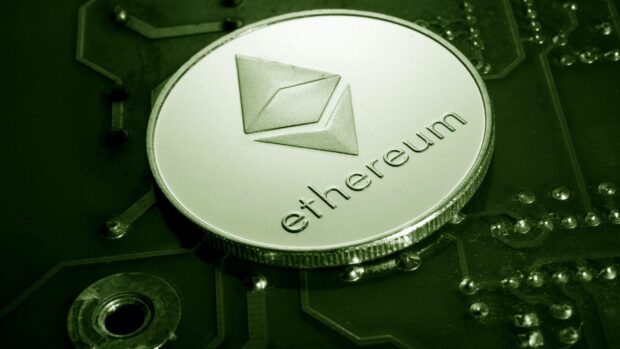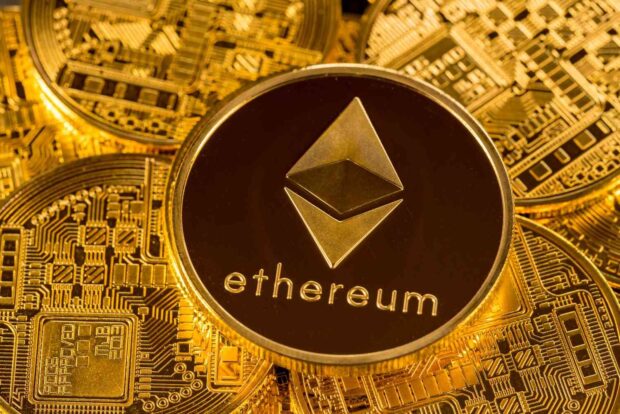The cryptocurrency market has seen its fair share of ups and downs, but one question on the minds of investors and enthusiasts alike is, will Ethereum (ETH) lead the next crypto bull run?
The Ethereum network has always been a critical player in the crypto ecosystem, but recent developments, including updates to its blockchain, partnerships, and use cases, suggest that ETH could play a crucial role in the next market surge.
In this article, we’ll explore how Ethereum is poised for growth and why it might just be the catalyst the crypto market needs for the next bull run.
Where Ethereum Is Used the Most

Ethereum is primarily used for decentralized applications (dApps), which run on its blockchain, offering a wide range of services from finance to gaming and beyond. DeFi platforms, where users can borrow, lend, and trade digital assets without the need for intermediaries, are among the biggest contributors to ETH’s demand.
Additionally, Ethereum’s widespread adoption in the NFT market, where artists and creators mint and sell digital art, is another key area where ETH is in high demand. Platforms like Nitrobet are also adopting Ethereum for transactions, integrating it as a payment method for crypto-savvy players.
Major enterprises are also looking to Ethereum’s smart contract capabilities for supply chain management, legal agreements, and more, highlighting its versatility as a blockchain.
As Ethereum’s ecosystem grows and more sectors explore its capabilities, the use of ETH is bound to increase, making it a critical asset in the future of blockchain technology.
Ethereum’s Evolution and Upgrades

Ethereum has undergone significant changes over the past few years. The transition from Ethereum 1.0 to Ethereum 2.0, marked by the implementation of proof-of-stake (PoS), has drastically improved the scalability, security, and energy efficiency of the network.
PoS allows ETH holders to “stake” their coins, locking them into the network to help validate transactions, and in return, they are rewarded with more ETH. This upgrade not only makes Ethereum more sustainable but also enables it to handle higher transaction volumes, which is a crucial factor as decentralized finance (DeFi) and non-fungible tokens (NFTs) continue to grow in popularity.
The proof-of-work model that Ethereum once relied upon was criticized for its high energy consumption, but Ethereum 2.0 aims to address these environmental concerns while offering greater scalability. With these improvements, Ethereum is primed to handle an influx of new users and transactions, which could lead to a significant increase in its value.
Platforms like Nitrobet Casino, for example, are beginning to accept ETH as a payment method, which could further spur demand for the cryptocurrency.
DeFi and NFTs: The Main Drivers of ETH Demand

Ethereum’s dominance in the decentralized finance (DeFi) and NFT spaces has contributed significantly to the demand for ETH. DeFi platforms, which allow users to borrow, lend, and trade cryptocurrencies without the need for traditional financial intermediaries, have seen exponential growth in recent years.
Ethereum’s smart contracts are the backbone of most DeFi platforms, and as the market for decentralized financial services continues to expand, the demand for ETH will likely increase.
Platforms like Uniswap, Aave, and Compound have led the way in DeFi adoption, and with more projects building on Ethereum, the network’s utility and value continue to rise.
Similarly, the rise of NFTs has brought Ethereum into the mainstream spotlight. NFTs are digital assets that represent ownership of a unique item, often related to art, music, gaming, and more.
The majority of NFTs are built on the Ethereum network, and as the NFT market matures, the demand for ETH could continue to grow. With platforms like OpenSea and Rarible dominating the NFT space, Ethereum has established itself as the go-to blockchain for creators and collectors alike.
The increased use of ETH for purchasing and trading NFTs directly impacts the token’s value, making it an essential asset in the ecosystem.
While Ethereum’s role in DeFi and NFTs is crucial, it’s not the only factor that could drive demand for ETH. The Ethereum network is also seeing growing interest from large-scale enterprises and institutional investors who are looking to leverage blockchain technology for a variety of use cases.
From supply chain management to digital identity verification, Ethereum is positioning itself as a versatile blockchain solution for businesses across different industries.
Will ETH Lead the Bull Run?
Historically, Ethereum has followed Bitcoin’s price movements, often lagging behind but eventually catching up during bull markets. However, there are signs that ETH could decouple from Bitcoin and lead the charge in the next bull run.
One of the key reasons for this is Ethereum’s ongoing upgrades, particularly Ethereum 2.0, which is expected to enhance the network’s performance significantly.
With the shift to PoS, Ethereum is not only becoming more environmentally friendly but also more attractive to institutional investors who are increasingly prioritizing sustainability in their portfolios.
Another reason why Ethereum could lead the next bull run is the growing adoption of Ethereum-based applications. As more companies, platforms, and users turn to Ethereum for smart contract solutions, decentralized apps (dApps), and blockchain-based services, the demand for ETH is likely to rise.
Furthermore, with the increasing popularity of DeFi and NFTs, there’s a strong case to be made that ETH’s value will continue to appreciate as the ecosystem expands.
Ethereum’s ability to drive innovation, combined with its recent upgrades, has positioned it as a strong contender for the next crypto bull run. While Bitcoin remains the market leader, Ethereum’s growing use cases and adoption make it an attractive option for investors looking to diversify their portfolios.
If the DeFi and NFT sectors continue to thrive and Ethereum’s network upgrades prove successful, it’s entirely possible that ETH could lead the next bull market, outperforming Bitcoin and other altcoins.


